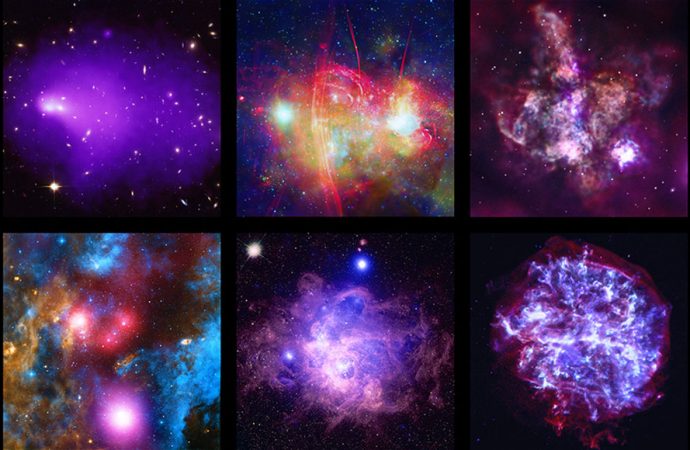The spacecraft launched in July 1999 and has been searching the sky ever since
Source: Science News
In July 1999, NASA’s Chandra X-ray Observatory took off aboard the space shuttle Columbia to scan the sky in a wavelength of light invisible to human eyes. For the last 20 years, Chandra has done just that, taking in high-energy X-rays, which can be detected only from above Earth’s atmosphere.
“Chandra remains peerless in its ability to find and study X-ray sources,” said Chandra X-ray Center director and astrophysicist Belinda Wilkes in a statement. “Since virtually every astronomical source emits X-rays, we need a telescope like Chandra to fully view and understand our universe.”
One of the spacecraft’s first images, released August 26, 1999, revealed X-rays from a neutron star or black hole at the heart of Cassiopeia A, the remnants of a star that exploded in a supernova that was seen by Tycho Brahe in 1572.
Since then, Chandra has spied on cosmic objects as diverse as merging galaxy clusters in the distant universe, black holes in the center of the Milky Way and the planet next door, Venus. Some of the phenomena Chandra investigates today weren’t even known yet when the telescope launched, such as X-rays emitted in the aftermath of clashing neutron stars that also emitted gravitational waves.

To celebrate the observatory’s 20th anniversary, NASA has released six images highlighting the breadth of what X-rays can reveal. Those images, which show X-ray data combined with optical and other types of observations, include regions where stars are born and the aftermath of their deaths, colliding galaxy clusters and the home of a supermassive black hole.
The first row of the top image above, from left to right, shows Abell 2146 (the result of a collision and merger of two massive galaxy clusters), the region around the supermassive black hole at the center of the Milky Way, and 30 Doradus, a star-forming region located close to the Milky Way.
In the second row of the top image, from left to right, is a massive and violent star called Cygnus OB2, a star-forming region called NGC 604 in the nearby galaxy Messier 33, and a supernova remnant called G292.

































Leave a Comment
You must be logged in to post a comment.